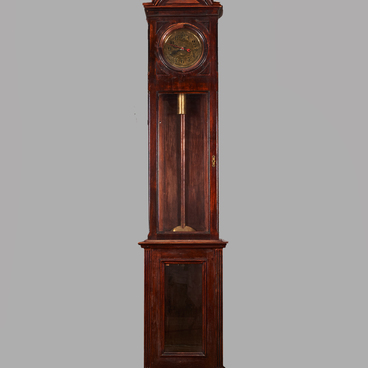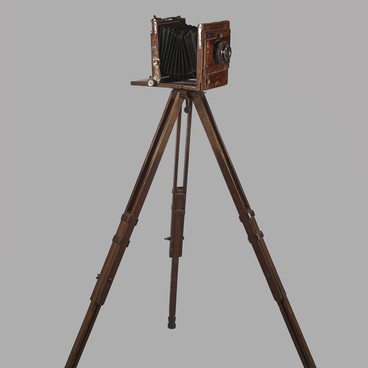The painting is made in the genre of flower still life in a realistic manner. Still life is a genre of painting that focuses on the depiction of objects. The Russian name for “still life” — “naturmort” — comes from the French nature morte or the Italian natura morta, which translate as “dead nature”. Floral still life emerged as a separate genre in Holland in the 17th century.
The painting from the collection of the Novorossiysk Historical Museum-Reserve reflects the taste of the artist and the originality of his idea. For example, the flowers belong to different seasons — there are spring daffodils, summer roses and lilies, and autumn chrysanthemums. They cannot all bloom at the same time, therefore, at least a large part of them was not painted from nature, being the result of the artist’s imagination.
Still life flowers are arranged in groups in a certain rhythm, which improves the overall perception of the composition. The emphasis is on the dark vase with roses and daffodils. The flowers are delicately emphasized by graceful chrysanthemums and airy clouds of hydrangeas in a glass vase, barely visible to the eye.
Actually, the way the glass is painted speaks of the artist’s skill. The same is indicated by the manner of depicting flowers and their arrangement. Another interesting detail is a dark curtain, which attracts attention and makes the still life look somewhat three-dimensional.
When looking at the picture, we can notice that some flowers — hydrangeas, irises — are transparent. This is probably the result of the artist alternating different stages of his work on the canvas. This can be due to an illusory quality of still life, and perhaps to the artist’s lack of experience. In the same context, it is worth considering the absence of flower stems in the same transparent vases.
The floristic diversity of the picture is estimated by eleven species: poetic narcissus, royal lily, large-flowered and panicle hydrangeas, May lily of the valley, common daisy (called chamomile), garden forms of irises, roses, chrysanthemums and violets, and, most likely, one of the types of meadowsweets. Many of them can be found in the courtyards and streets of Novorossiysk, excluding both types of hydrangeas.
The painting from the collection of the Novorossiysk Historical Museum-Reserve reflects the taste of the artist and the originality of his idea. For example, the flowers belong to different seasons — there are spring daffodils, summer roses and lilies, and autumn chrysanthemums. They cannot all bloom at the same time, therefore, at least a large part of them was not painted from nature, being the result of the artist’s imagination.
Still life flowers are arranged in groups in a certain rhythm, which improves the overall perception of the composition. The emphasis is on the dark vase with roses and daffodils. The flowers are delicately emphasized by graceful chrysanthemums and airy clouds of hydrangeas in a glass vase, barely visible to the eye.
Actually, the way the glass is painted speaks of the artist’s skill. The same is indicated by the manner of depicting flowers and their arrangement. Another interesting detail is a dark curtain, which attracts attention and makes the still life look somewhat three-dimensional.
When looking at the picture, we can notice that some flowers — hydrangeas, irises — are transparent. This is probably the result of the artist alternating different stages of his work on the canvas. This can be due to an illusory quality of still life, and perhaps to the artist’s lack of experience. In the same context, it is worth considering the absence of flower stems in the same transparent vases.
The floristic diversity of the picture is estimated by eleven species: poetic narcissus, royal lily, large-flowered and panicle hydrangeas, May lily of the valley, common daisy (called chamomile), garden forms of irises, roses, chrysanthemums and violets, and, most likely, one of the types of meadowsweets. Many of them can be found in the courtyards and streets of Novorossiysk, excluding both types of hydrangeas.



